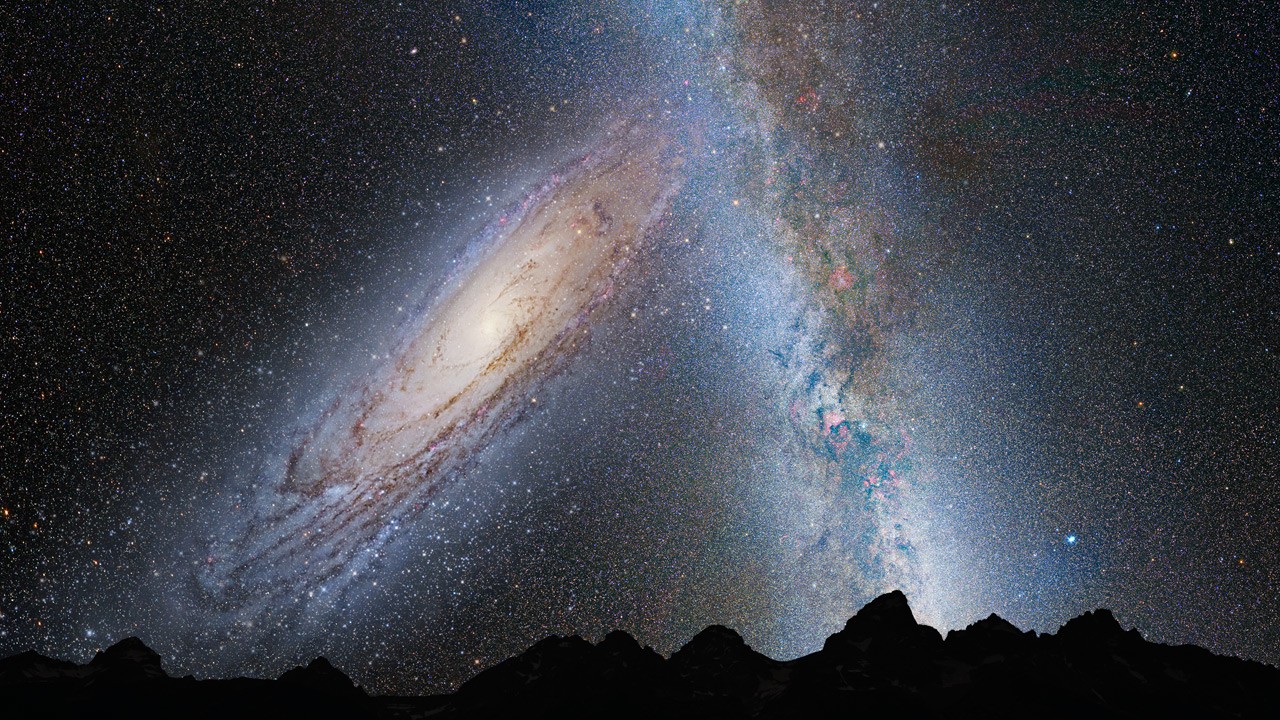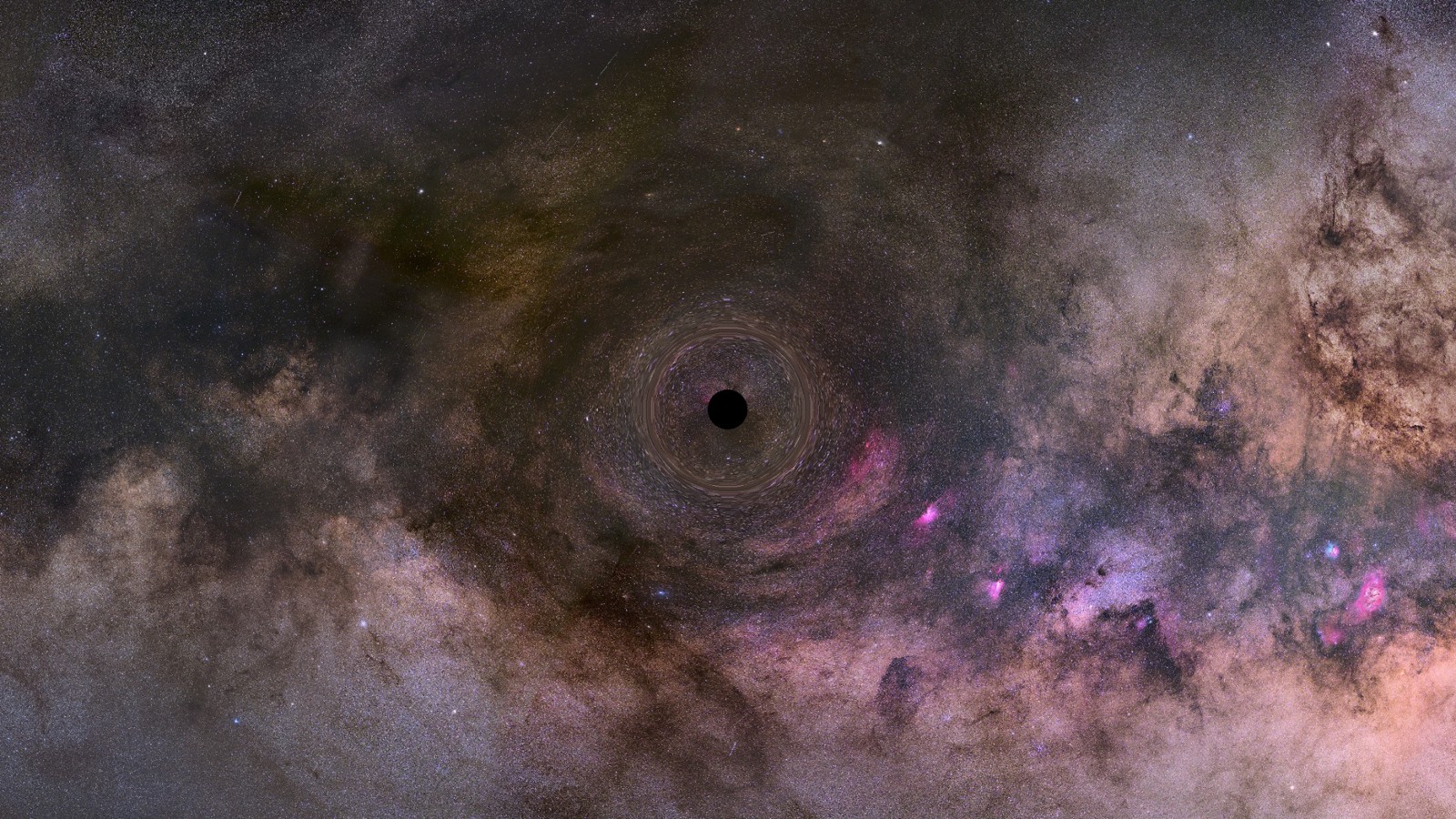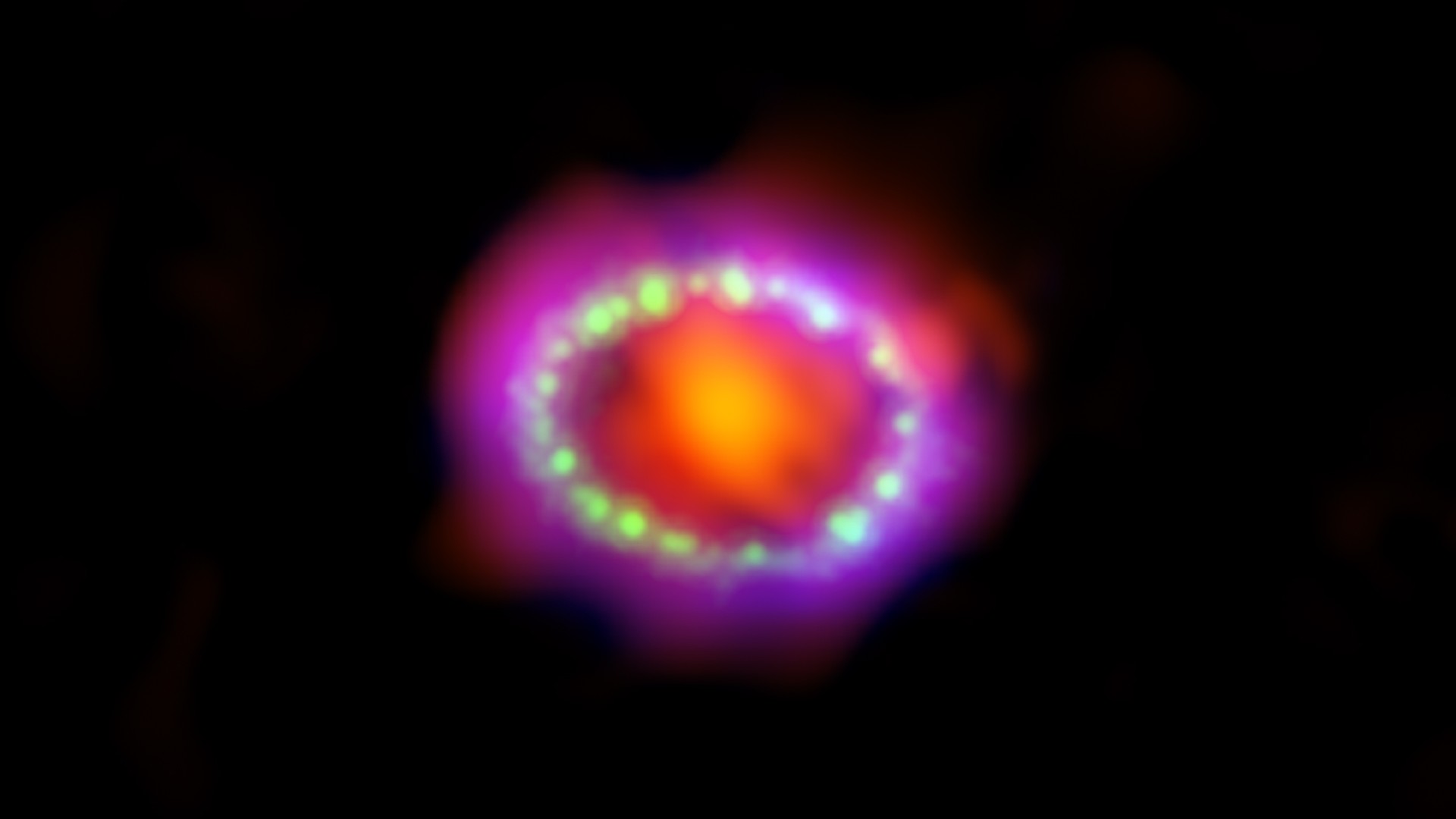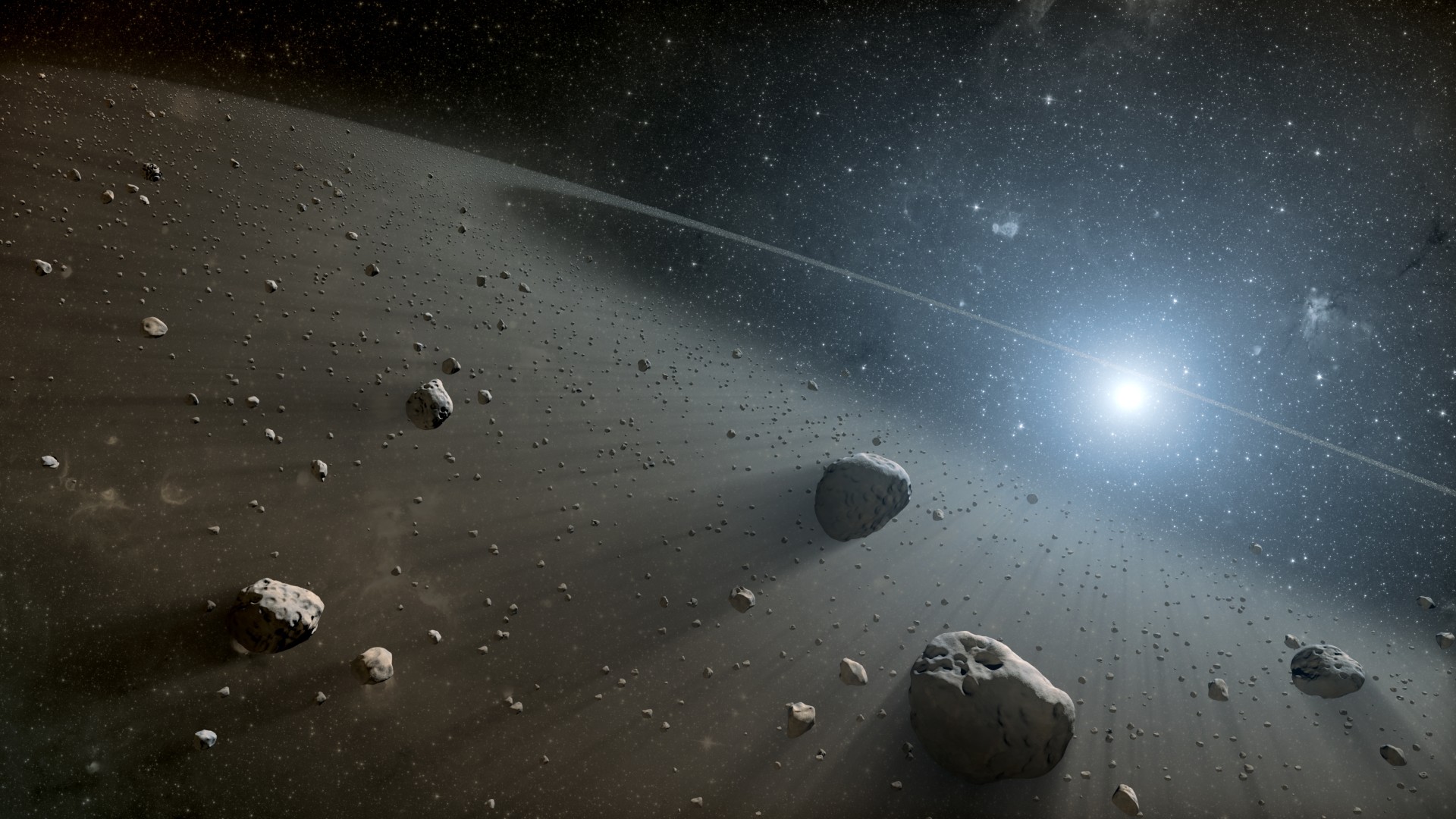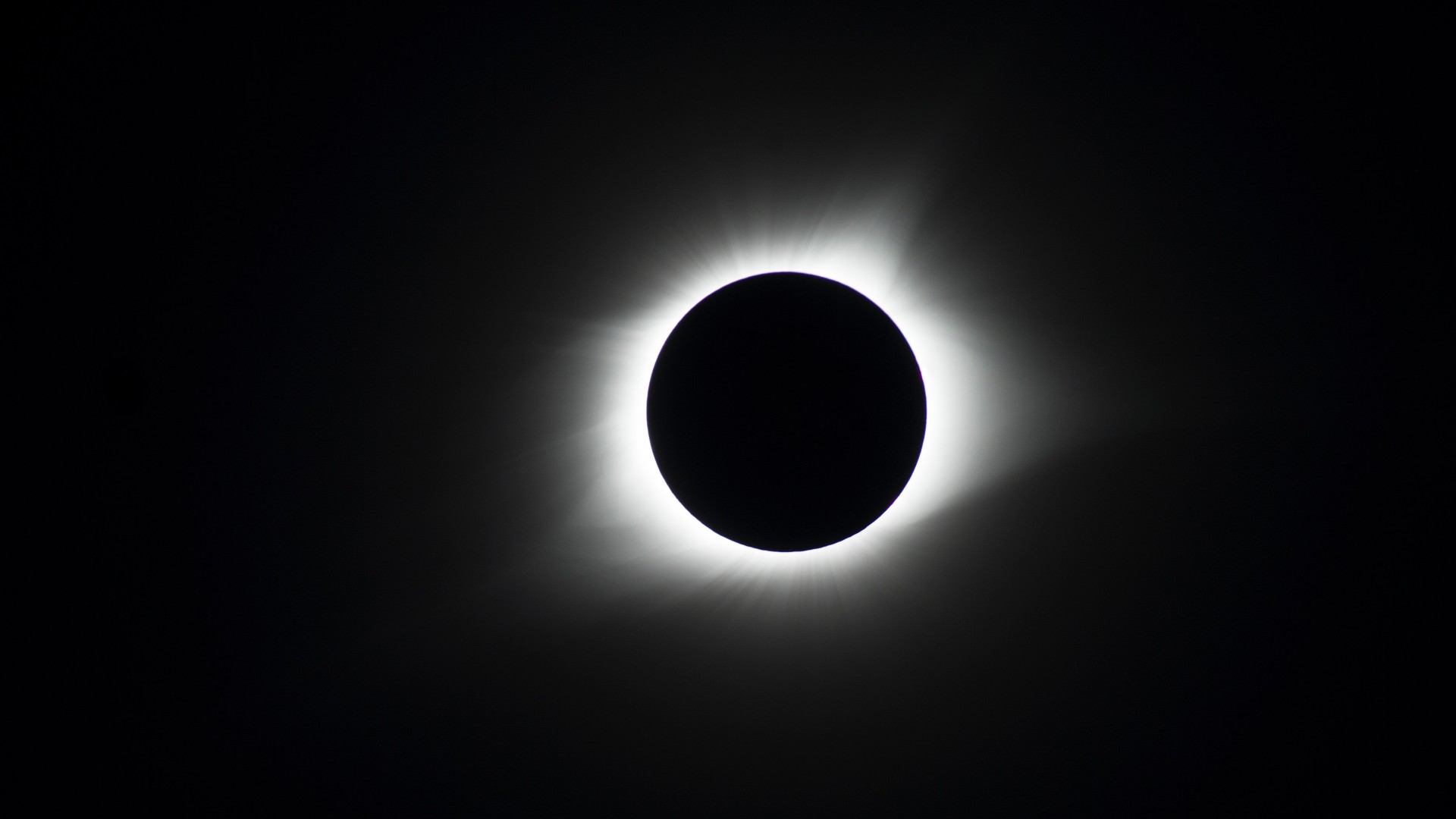The 7 most terrifying things in space
From megacomets to rogue black holes, these formidable phenomena make the universe a truly dangerous place.
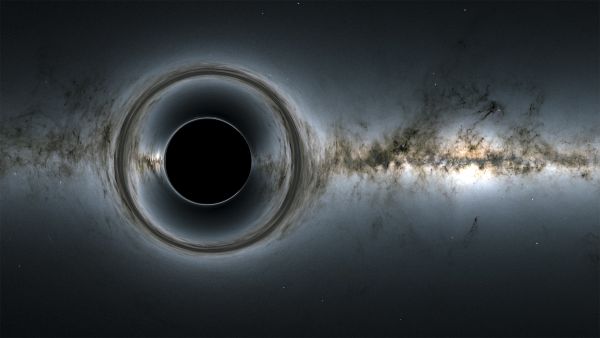
Space: the final frontier. The region between our home planet and everything else in the universe is a big unknown — full of untold wonders, celestial objects so big they boggle the mind, and some truly catastrophic events. Here are seven of the most terrifying things in space.
1. Incoming megacomet
Are you ready for a "megacomet"? The appearance in our solar system in 2021 of the biggest-ever comet is terrifying. At 85 miles (137 kilometers) across, with an icy nucleus 50 times bigger than the previous record holder and a mass 100,000 times greater than the average comet's, comet C/2014 UN271 (Bernardinelli-Bernstein) is so big, it was initially classified as a minor planet.
Thankfully, this monster snowball is predicted to get no closer than a billion miles (1.6 billion km) to Earth when it makes its closest approach in 2031. But could there be more monster comets out there? That is a truly terrifying prospect.
2. Collision with Andromeda
It may be 2.5 million light-years from Earth, but Andromeda, the largest galaxy in our Local Group, is on a terrifying trajectory: It's headed straight for, and will one day collide with, our Milky Way galaxy. Just before it does, though, it will dominate the night sky. Thankfully, Andromeda won't arrive for another 3 billion to 5 billion years or so.
Related: Who will survive the cosmic crash between our galaxy and its neighbor?
3. Catastrophic solar flare
Earth is constantly bombarded by high-energy particles from the sun. Most of the time, the planet's magnetic field deflects these solar attacks. However, occasionally, magnetic contortions inside our star realign and cause a solar flare, a sudden flash of light that hurls incredible amounts of X-rays and energy in all directions that travels at the speed of light. The result can be blackouts in navigation and communications signals. Another scenario is a coronal mass ejection (CME), a slow-burner that sends magnetized particles into space. If the CME is aimed at Earth we get geomagnetic storms a few days later, which have the potential to disrupt communications and power grids.
The most powerful geomagnetic storm in modern history, known as the Carrington Event, occurred in 1859, before the modern age of technology. If a Carrington-magnitude storm were to occur now, it would cause an "internet apocalypse" — an outage that could last months, Live Science previously reported. The chance of such a huge solar storm was rated at between 1.6% and 12% per decade.
Get the world’s most fascinating discoveries delivered straight to your inbox.
4. Rogue black holes in our galaxy
Black holes are obviously terrifying: These crushed remnants of a massive star that exploded as a supernova are so massive that nothing, not even light, can escape its grasp. Thankfully, it feels pretty safe to look at the first image of Sagittarius A*, the supermassive black hole at the center of the Milky Way. After all, it's 26,000 light-years away.
But not all of the black holes in the Milky Way are as distant as the monster one at the center of our galaxy; there are thought to be 100 million black holes in the Milky Way, a large fraction of which may be wandering through the Milky Way. This year, scientists using the Hubble Space Telescope spotted a rogue black hole in our galaxy — this one only 5,000 light-years from Earth — and even measured its mass: seven times the mass of the sun.
5. A supernova in the "kill zone"
Another terror from space is the potential for a catastrophic supernova. If a star dies in a massive explosion called a supernova, anything within a specific "kill zone" will be wiped out by intense waves of radiation. Astronomers have calculated that the kill zone extends 40 or 50 light-years from a supernova's blast, and no known stars within that proximity to Earth are likely to blow anytime soon. However, it's possible that high-energy X-rays and gamma-rays from more distant supernovas could interact with Earth's atmosphere and damage the ozone layer, which would make it easier for dangerous ultraviolet radiation from the sun to get through.
A close supernova is unlikely; although one of the most famous red giant stars, Betelgeuse, is on the cusp of going supernova, it's nearly 650 light-years distant, meaning it is unlikely to affect our solar system. The closest supernova to Earth directly observed by astronomers in the past 400 years was 1987A (SN 1987A). Discovered in the Large Magellanic Cloud, a satellite galaxy of the Milky Way, it blazed with the power of 100 million stars for many months following its discovery on Feb. 23, 1987.
6. 154,741 extra asteroids
Many large objects lurk in our solar system, and we know only about a fraction of them. It's possible that there's an unknown asteroid out there that could destroy life on Earth, just like the one that wiped out the dinosaurs 66 million years ago. Luckily, we're discovering more of our solar system's space rocks every day, thanks to ever-improving wide-field telescope surveys. In fact, scientists now think that 90% of "planet-killer" near-Earth objects — those larger than 0.6 mile (1 km) in diameter — and around 50% of "city-killer" have been found.
However, the European Space Agency's Gaia space telescope revealed this year that there are about 10 times more asteroids in the solar system than astronomers thought. The new data set includes more than 150,000 objects in the solar system, most of them asteroids. Gulp.
7. The moon's shadow
A total solar eclipse is a spellbinding celestial event, but totality can also be a little terrifying. By the time the moon covers 95% of the sun's disk, the sky gets darker. The temperature drops. A chilly wind blows over you, and every hair on your body stands up. Eerie gray twilight descends, and shadows sharpen. If you're in an elevated location overlooking a vast landscape, you can also see the moon's shadow racing toward you until it swallows you — and everything goes dark. There's an aching fear in your stomach; maybe the sun will not return.
A naked-eye view of the sun's corona is the prize for anyone standing in the moon's shadow, but that haunting feeling will stay with you until daylight returns a few minutes later — and maybe beyond.
Originally published on Live Science.

Jamie Carter is a freelance journalist and regular Live Science contributor based in Cardiff, U.K. He is the author of A Stargazing Program For Beginners and lectures on astronomy and the natural world. Jamie regularly writes for Space.com, TechRadar.com, Forbes Science, BBC Wildlife magazine and Scientific American, and many others. He edits WhenIsTheNextEclipse.com.



